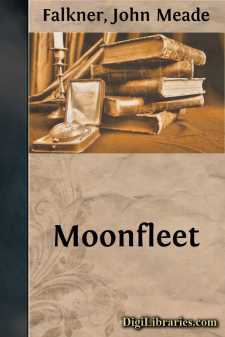Categories
- Antiques & Collectibles 13
- Architecture 36
- Art 48
- Bibles 22
- Biography & Autobiography 813
- Body, Mind & Spirit 142
- Business & Economics 28
- Children's Books 15
- Children's Fiction 12
- Computers 4
- Cooking 94
- Crafts & Hobbies 4
- Drama 346
- Education 46
- Family & Relationships 57
- Fiction 11828
- Games 19
- Gardening 17
- Health & Fitness 34
- History 1377
- House & Home 1
- Humor 147
- Juvenile Fiction 1873
- Juvenile Nonfiction 202
- Language Arts & Disciplines 88
- Law 16
- Literary Collections 686
- Literary Criticism 179
- Mathematics 13
- Medical 41
- Music 40
- Nature 179
- Non-Classifiable 1768
- Performing Arts 7
- Periodicals 1453
- Philosophy 64
- Photography 2
- Poetry 896
- Political Science 203
- Psychology 42
- Reference 154
- Religion 513
- Science 126
- Self-Help 84
- Social Science 81
- Sports & Recreation 34
- Study Aids 3
- Technology & Engineering 59
- Transportation 23
- Travel 463
- True Crime 29
The Nebuly Coat
Description:
Excerpt
Prologue.
Sir George Farquhar, Baronet, builder of railway-stations, and institutes, and churches, author, antiquarian, and senior partner of Farquhar and Farquhar, leant back in his office chair and turned it sideways to give more point to his remarks. Before him stood an understudy, whom he was sending to superintend the restoration work at Cullerne Minster.
“Well, good-bye, Westray; keep your eyes open, and don’t forget that you have an important job before you. The church is too big to hide its light under a bushel, and this Society-for-the-Conservation-of-National-Inheritances has made up its mind to advertise itself at our expense. Ignoramuses who don’t know an aumbry from an abacus, charlatans, amateur faddists, they will abuse our work. Good, bad, or indifferent, it’s all one to them; they are pledged to abuse it.”
His voice rang with a fine professional contempt, but he sobered himself and came back to business.
“The south transept roof and the choir vaulting will want careful watching. There is some old trouble, too, in the central tower; and I should like later on to underpin the main crossing piers, but there is no money. For the moment I have said nothing about the tower; it is no use raising doubts that one can’t set at rest; and I don’t know how we are going to make ends meet, even with the little that it is proposed to do now. If funds come in, we must tackle the tower; but transept and choir-vaults are more pressing, and there is no risk from the bells, because the cage is so rotten that they haven’t been rung for years.
“You must do your best. It isn’t a very profitable stewardship, so try to give as good an account of it as you can. We shan’t make a penny out of it, but the church is too well known to play fast-and-loose with. I have written to the parson—a foolish old fellow, who is no more fit than a lady’s-maid to be trusted with such a church as Cullerne—to say you are coming to-morrow, and will put in an appearance at the church in the afternoon, in case he wishes to see you. The man is an ass, but he is legal guardian of the place, and has not done badly in collecting money for the restoration; so we must bear with him.”
Cullerne Wharf of the Ordnance maps, or plain Cullerne as known to the countryside, lies two miles from the coast to-day; but it was once much nearer, and figures in history as a seaport of repute, having sent six ships to fight the Armada, and four to withstand the Dutch a century later. But in fulness of time the estuary of the Cull silted up, and a bar formed at the harbour mouth; so that sea-borne commerce was driven to seek other havens. Then the Cull narrowed its channel, and instead of spreading itself out prodigally as heretofore on this side or on that, shrunk to the limits of a well-ordered stream, and this none of the greatest. The burghers, seeing that their livelihood in the port was gone, reflected that they might yet save something by reclaiming the salt-marshes, and built a stone dyke to keep the sea from getting in, with a sluice in the midst of it to let the Cull out....




